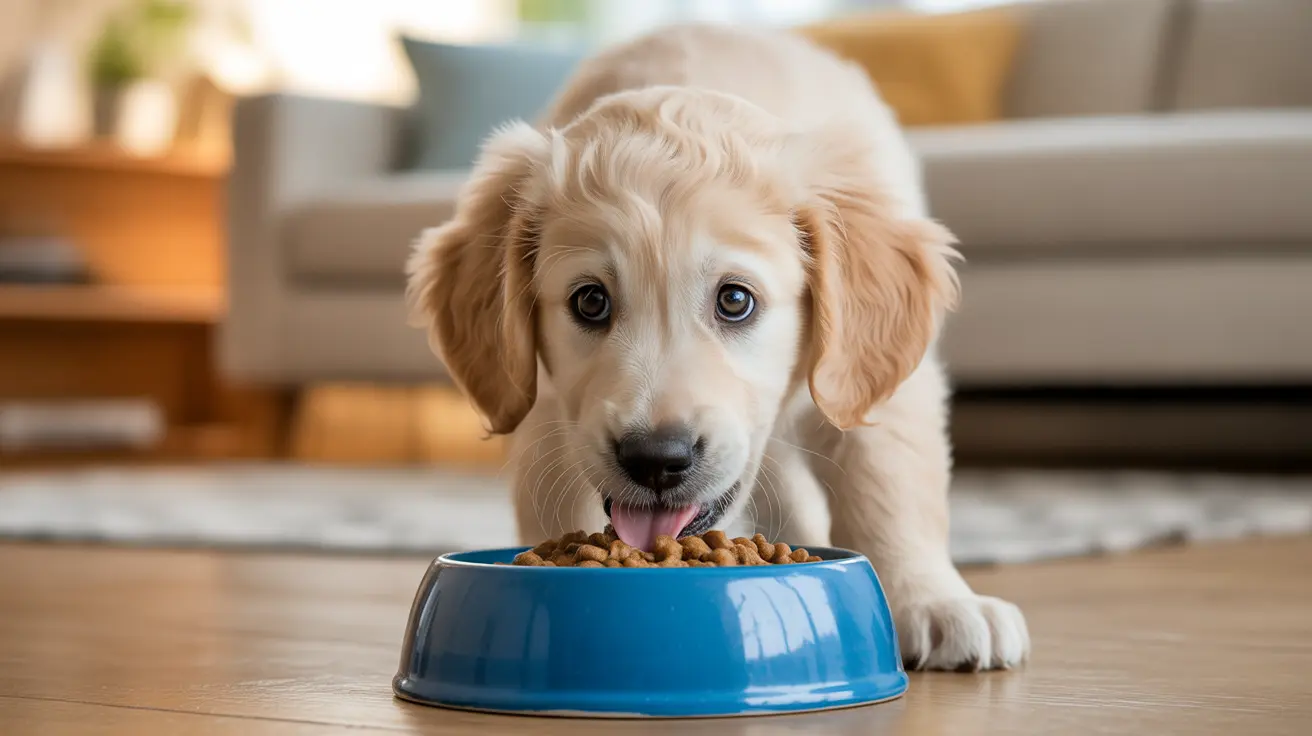Understanding Golden Retriever Puppy Feeding Stages
Early Weeks (3-6 weeks)
During the weaning period, Golden Retriever puppies transition from mother's milk to solid food. Start with softened puppy food mixed with warm water or milk replacer, gradually increasing the food consistency as they adapt.
Critical Growth Period (6-12 weeks)
At this stage, puppies require three to four meals daily, typically consuming 1.5-2 cups of food per day. This frequent feeding schedule supports their rapid growth and helps maintain stable blood sugar levels.
Detailed Feeding Chart by Age
3-4 Months
- Total daily amount: 2-2.5 cups
- Feeding frequency: 3 meals per day
- Recommended portion size: ¾ to 1 cup per meal
5-6 Months
- Total daily amount: 3-4 cups
- Feeding frequency: 3 meals per day
- Recommended portion size: 1-1.3 cups per meal
6-12 Months
- Total daily amount: 3-4 cups
- Feeding frequency: 2 meals per day
- Recommended portion size: 1.5-2 cups per meal
Nutritional Requirements and Considerations
Golden Retriever puppies need specially formulated large-breed puppy food that provides:
- Controlled calcium and phosphorus levels for proper bone development
- High-quality protein for muscle growth
- Essential fatty acids for coat and brain development
- Appropriate calorie content to prevent rapid growth
Monitoring Growth and Adjusting Portions
Regular monitoring of your puppy's body condition is essential. You should be able to feel but not see their ribs. Adjust portions based on:
- Activity level
- Growth rate
- Body condition score
- Individual metabolism
Transitioning to Adult Food
The transition to adult food typically occurs between 12-18 months of age. Follow this schedule:
- Days 1-2: 75% puppy food, 25% adult food
- Days 3-4: 50% puppy food, 50% adult food
- Days 5-6: 25% puppy food, 75% adult food
- Day 7: 100% adult food
Frequently Asked Questions
How much food should I feed my Golden Retriever puppy at different ages according to a feeding chart?
Follow age-based guidelines: 1.5-2 cups daily at 6-12 weeks, 2-2.5 cups at 3-4 months, 3-4 cups at 5-6 months, and 3-4 cups from 6-12 months, always divided into multiple meals.
When should I switch my Golden Retriever puppy from three meals a day to two meals a day?
Transition from three to two meals daily around 6 months of age, maintaining the same total daily food amount but divided into larger portions.
What type of puppy food and nutritional balance is best for a growing Golden Retriever?
Choose high-quality large breed puppy food with controlled calcium and phosphorus levels, adequate protein (around 26-28%), and essential fatty acids for optimal development.
How do I safely transition my Golden Retriever puppy from puppy to adult dog food?
Begin the transition between 12-18 months of age, gradually mixing increasing amounts of adult food with puppy food over 7-10 days to prevent digestive issues.
How can I monitor and adjust my Golden Retriever puppy's feeding amounts to prevent obesity and joint problems?
Regularly check body condition, ensure you can feel but not see ribs, monitor weight gain, and adjust portions based on growth rate and activity level. Consult your veterinarian for personalized guidance.
Conclusion
Following a proper feeding chart for your Golden Retriever puppy is essential for their healthy development. Remember to adjust portions based on individual needs, maintain consistent feeding schedules, and transition to adult food at the appropriate time. Regular veterinary check-ups will help ensure your puppy stays on track for optimal growth and development.






